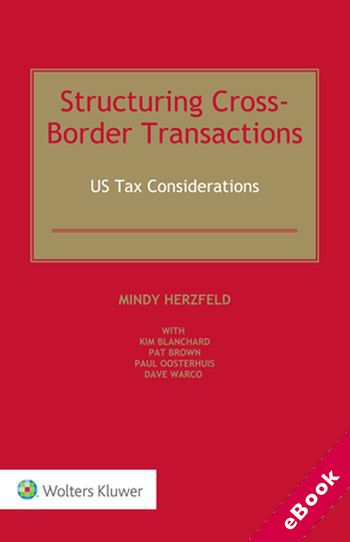We are now closed for the Christmas and New Year period, returning on Monday 5th January 2026. Orders placed during this time will be processed upon our return on 5th January.

The device(s) you use to access the eBook content must be authorized with an Adobe ID before you download the product otherwise it will fail to register correctly.
For further information see https://www.wildy.com/ebook-formats
Once the order is confirmed an automated e-mail will be sent to you to allow you to download the eBook.
All eBooks are supplied firm sale and cannot be returned. If you believe there is a fault with your eBook then contact us on ebooks@wildy.com and we will help in resolving the issue. This does not affect your statutory rights.
Structuring Cross-Border Transactions, by a prominent author and practitioner, is a unique book that will help tax and corporate practitioners engaged in structuring both U.S. cross-border transactions, including inbound and outbound acquisitions, and joint ventures, involving both public and privately held companies. Operation of the rules is illustrated with specific examples that include financial metrics, allowing readers to pierce through and understand how the rules really operate in specific fact patterns, highlighting planning opportunities as well as potential traps. As the U.S. international tax rules have become less systematic and more complex over the past few years, while cross-border deals have become more common, this book provides an invaluable resource for all engaged in the field.
The following key aspects of structuring cross-border transactions are analyzed, as applicable to inbound and outbound investments and dispositions:
This book helps guide decision making at every step with the aid of detailed numerical examples and assists in understanding key drivers materially impacting results.
By furnishing a guide for practitioners from any country who need to understand the U.S. tax consequences of a particular transaction, this book bridges the gap in the tax literature. It spotlights the impact of U.S. tax law on transactions put together in the real world, and its in-depth analysis of how U.S. tax provisions interrelate and interact with foreign tax rules will prove to be of immeasurable value to corporate lawyers, finance professionals, and others active in cross-border mergers and acquisitions. It will be highly appreciated by transactional tax practitioners as an indispensable reference tool.